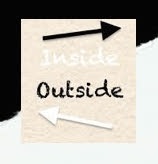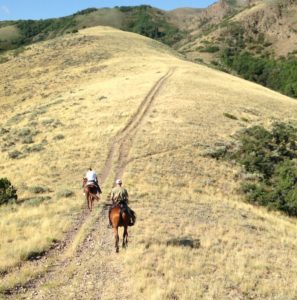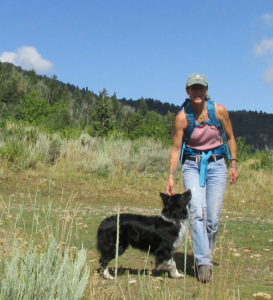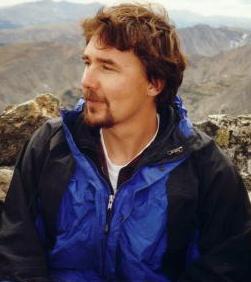Like a once-favorite song, this trend of mindfulness is starting to vex me. Its popularity is what social media and connectivity felt like five or 10 years ago. But already, I just wish folks would get over it.
- Please delete Headspace, the meditation app, from your phone.
- Please stop saying “mindful” at every opportunity.
- Please don’t give me that look that says you’re non-judgmental and always cycle thoughts through your mindful filter before speaking.
Nowadays, this preoccupation with mindfulness eats up all the spare time of cultured folks. For this informed and plugged-in populace, mindfulness is what intellectualism used to be.
 It is the virtual selfie, taken daily, even hourly.
It is the virtual selfie, taken daily, even hourly.- It’s a brain scan developed by its owner.
- It’s the therapist you don’t have to pay.
- It’s right up there with pop cultural literacy as the must-have conversation element. As in, “I just loved that TED talk by Andy Puddicombe!”
Meanwhile, reading books has become quaint and oddly unfashionable. Someone visited our house the other day, looked at our bookshelves, and asked innocently, “Who likes books?” As if books were a quirky, souvenir spoon collection.
 Meanwhile, what happened to actually getting out and doing things? Since when did being inside our heads become more satisfying than engaging with the outdoors or playing sports? Oh, wait. We now call events like those “experiential” and they will be appropriately documented on aforementioned connectivity platforms. “Being present” while “getting out” has become a bit of an oxymoron.
Meanwhile, what happened to actually getting out and doing things? Since when did being inside our heads become more satisfying than engaging with the outdoors or playing sports? Oh, wait. We now call events like those “experiential” and they will be appropriately documented on aforementioned connectivity platforms. “Being present” while “getting out” has become a bit of an oxymoron.
I’ve observed a verifiable bell curve of consciousness, that’s making me wish I had more 7- or 70-year old friends. If you track age along one line, and consciousness/mindfulness on the other, you can see it clearly. Kids and old folks (especially those who are dementing, god bless ‘em) tend to be unconscious of their own mindfulness. In other words, they aren’t mindful of their ability to be present. They’re present, of course, but they won’t be messaging anyone about the moment or scribbling about it to themselves.
 I admit to being guilty of this over-consciousness. I, too, have been sucked into the pitfalls of too much self-awareness. Like singing a hook of that once-favorite song, it can be a hard tic to shake. Sing it, then mutter to myself, “Stop!” Sing it again, shout, “Gawdalmighty.”
I admit to being guilty of this over-consciousness. I, too, have been sucked into the pitfalls of too much self-awareness. Like singing a hook of that once-favorite song, it can be a hard tic to shake. Sing it, then mutter to myself, “Stop!” Sing it again, shout, “Gawdalmighty.”
And don’t get me wrong. I’m all for slowing down. I’m all for slow food, slow uphill hikes, the slow development of connection between a person and the wild, or between a horse and rider. Slowing down, yes! Dead stop? Please, no!
I talked about this cultural trend with David Gessner last week. The author of “All the
Wild that Remains” spent a few years studying Wallace Stegner and Edward Abbey.
“The word ‘mindfulness’ makes me want to kick back a little bit. And not kick back, as in ‘relax.’ …Cows are probably pretty good at being in the moment. Human beings, not so much,” he said.
Gessner reminded me of a famous and related line from Abbey: “Enough with saving the world. Let’s go down the river.”
So, I’m keeping Abbey close while crafting my resolve:
Get out and get outside your head.
Or, as my son, Beau likes to say: #Getoffyourbuttandfeelthings.

HI Maddy – My take on “mindfulness” is this: It is not about “being inside our heads rather than engaging with the outdoors or playing sports?”
It is about , (if you pardon the use of the word) being “present” in the moment, in whatever you are doing. You are showing up, and engaging in whatever you are doing. It’s paying attention. Examples: in yoga class you are fully aware of your how your body is moving with your breath, and your are not thinking about your shopping list or problems at work. If those thoughts come in, you become aware of them, and let them past , and the you are in ” the moment again”.
I try to use this mindfulness perspective in all that I do , especially at work. I found this to be very helpful in the early stages of my grief with Cory’s death.The last thing I wanted to be doing, was to be at work with my pain. So I would focus on being in “the moment ” , or ” being present,” when I was working with a resident with a 30 minute personal training session or teaching a class, or doing administrative work. Then I would leave work, and then allow the grieving to be there. It is how I did it, and still, do it now. I think being outdoors hiking, taking care of horses, mowing the lawn, raking leaves – whatever a person may be doing, is a perfect place to be mindful of what they are doing.
Well said, Mary. Thanks so much for weighing in on this!